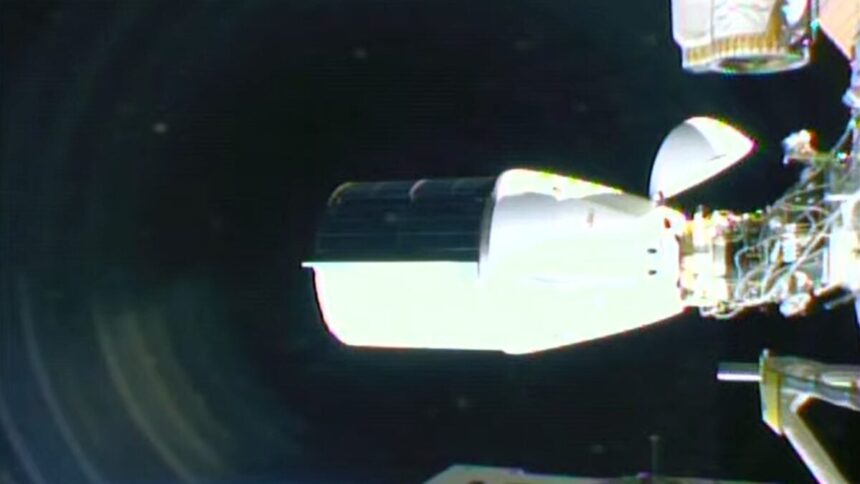The International Space Station (ISS) has been in orbit for over 26 years, housing astronauts at an altitude of 250 miles (400 kilometers) above Earth. But even at that distance, the space station can’t escape the drag of Earth’s atmosphere as oxygen molecules and other gases collide with it, causing it to lose altitude over time.
For the ISS to retain its status in orbit, NASA and its partners perform the occasional reboost maneuver. This is typically done using the space station’s own thrusters (which are tiny and relatively weak) or with Russia’s Progress spacecraft and Northrop Grumman’s Cygnus. For the first time, however, and starting in September, NASA will use SpaceX’s Dragon vehicle to help sustain the space station’s orbital altitude.
A boost kit in the trunk
SpaceX’s Dragon launched to the ISS on Sunday at 2:45 a.m. ET, carrying more than 5,000 pounds of supplies to the orbiting lab. The otherwise routine commercial resupply mission carried a little something extra this time around, a propellant system tucked inside Dragon’s trunk for a reboost demonstration.
Dragon’s boost kit will be used to maintain the altitude of the ISS starting in September through a series of burns planned throughout the fall, nudging the massive space station a little higher in its orbit.
The SpaceX spacecraft, while docked to the station, will use a propellant system that’s independent from the one used to fuel its own engines. Instead, the boost kit fuels two Draco engines in the spacecraft’s trunk using an existing hardware and propellant system design, according to NASA.
Dragon’s engines are not facing the right direction to pull off the boost maneuvers; hence, the need for the additional engines that are aligned with the velocity vector of the ISS.
The rear-facing engines are connected to propellant tanks filled with hydrazine and nitrogen tetroxide, which ignite when they come in contact with one another. When it’s time to give the ISS a little boost, the engines will ignite and lightly adjust the space station’s altitude in low Earth orbit.
Multiple reboost options
NASA and SpaceX tested Dragon’s ability to reboost the ISS in November 2024 through a demonstration that lasted approximately 12 minutes. Dragon successfully adjusted the station’s orbit by 7/100 of a mile at apogee, the point at which it’s farthest away from Earth, and 7/10 of a mile at perigee, when it is closest to Earth.
“By testing the spacecraft’s ability to provide reboost and, eventually, attitude control, NASA’s International Space Station Program will have multiple spacecraft available to provide these capabilities for the orbital complex,” NASA wrote in a statement at the time.
The Dragon spacecraft will remain docked to the ISS until December—the longest period for a cargo mission—in order to pull off the reboost maneuvers in the coming months. The boost kit being used on this mission is a smaller version of one SpaceX is currently developing for the space station’s final deorbit.
The ISS is due to retire by 2030, and NASA plans on using a Dragon spacecraft to perform a series of deorbit burns that will lower the space station’s altitude until it burns up in Earth’s atmosphere. Until the moment comes for its impending doom, the ISS will get to enjoy a little boost from Dragon.
Read the full article here












